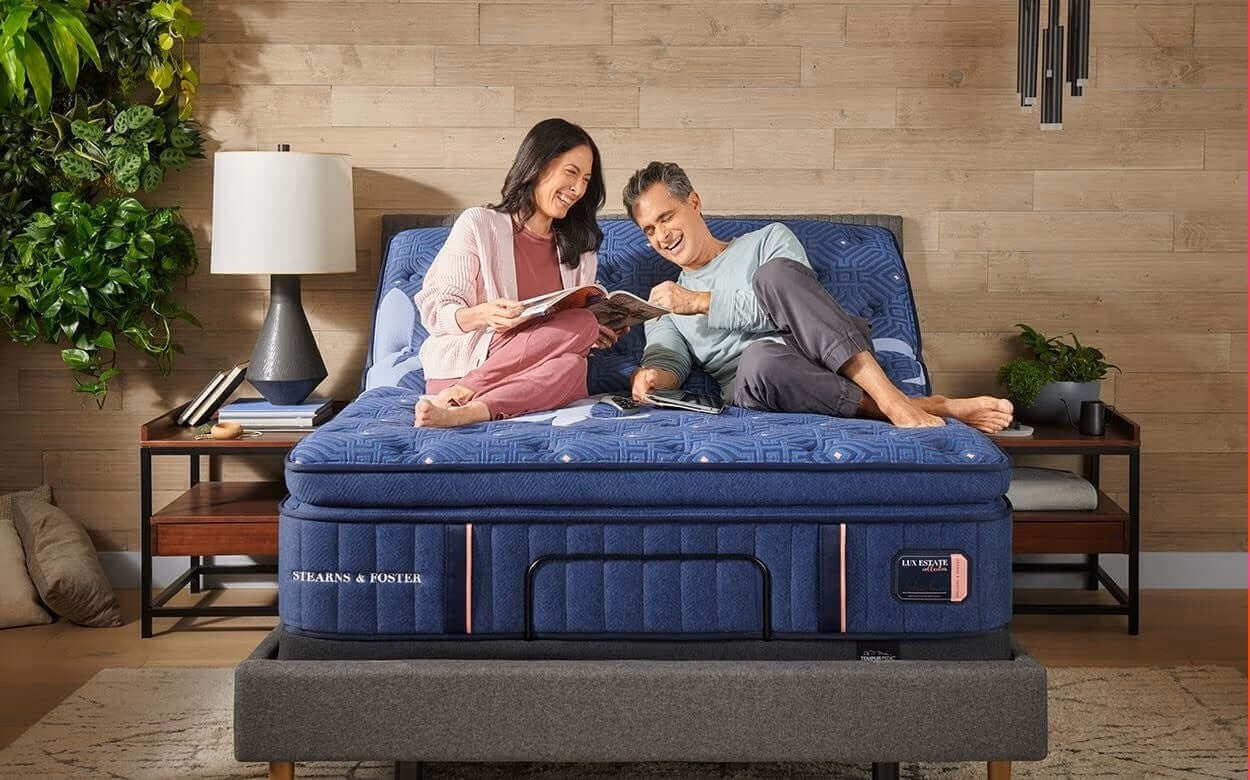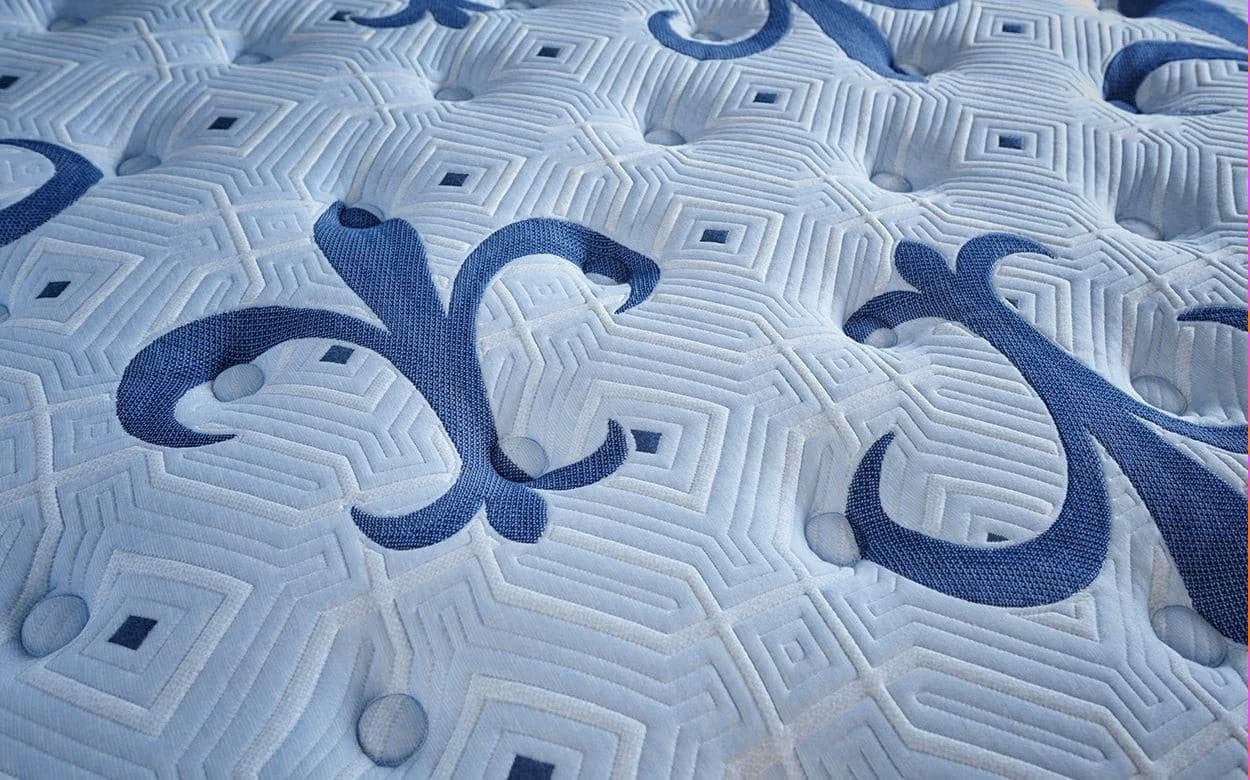Back pain is one of the most common reasons people replace their mattresses. The search for relief often leads to a big decision: Should you choose a spring mattress or a foam mattress?
Spring mattresses also called innerspring or hybrid mattresses have been around for decades and remain popular for their bounce and breathability. Foam mattresses, on the other hand, are praised for their contouring support and pressure relief.
So, which is better for back pain? The answer isn’t one-size-fits-all. A well-made spring mattress can be excellent for back pain relief but only if it offers the right support system and firmness level.
Table of Content
- Introduction
- Key Takeaways
- What Causes Back Pain During Sleep?
- How Spring Mattresses Work
- How Foam Mattresses Work
- Advantages of Spring Mattresses for Back Pain
- Drawbacks of Spring Mattresses for Back Pain
- Foam Mattresses: Benefits and Limitations
- Spring vs Foam: Feature-by-Feature Comparison
- How to Choose the Right Mattress for Your Back
- Comparison Table: Spring vs Foam for Back Pain
- Visual Graph: Support vs Pressure Relief
- Top Picks for Back Pain Relief: Spring and Foam Mattresses
- Conclusion
- Frequently Asked Questions
Key Takeaways
- A high-quality spring mattress with good lumbar support can help alleviate back pain.
- Foam mattresses excel at contouring and pressure relief.
- The firmness level and quality of materials matter more than whether it’s spring or foam.
- Hybrids combine the benefits of both designs.
- Always test a mattress before buying to see how it supports your spine.
What Causes Back Pain During Sleep?
Back pain can develop or worsen overnight if your mattress doesn’t keep your spine properly aligned. Common causes include:
Sagging: Older mattresses develop dips that force your back into unnatural positions.
Excessive Firmness: A too-firm mattress can prevent your hips and shoulders from sinking, causing misalignment.
Too Soft: If your mattress is too plush, your hips sink too far, straining the lower back.
Lack of Support: Thin or poor-quality mattresses can’t support heavier body parts, creating pressure points.
Proper support is critical regardless of whether your mattress uses springs or foam.
How Spring Mattresses Work
Spring mattresses are built around a core of steel coils. Different types of coils create different levels of support and contouring:
Bonnell Coils: Hourglass-shaped coils connected by wires. Traditional, but less contouring.
Offset Coils: Similar to Bonnell but designed to flex more easily.
Continuous Coils: Made from a single wire. Durable but can transfer motion.
Pocketed Coils: Individually wrapped springs that move independently to contour to your body. The best option for back pain.
Above the coils, layers of foam or fiber provide cushioning.
How Foam Mattresses Work
Foam mattresses use layers of polyurethane foam, memory foam, latex, or gel-infused foam to create a contouring sleep surface.
Memory Foam: Conforms to your shape and distributes weight evenly.
Polyfoam: Offers cushioning and support at a lower cost.
Latex Foam: Naturally resilient and breathable.
These layers absorb movement and relieve pressure on sensitive areas.
Advantages of Spring Mattresses for Back Pain
Not all spring mattresses are created equal but a quality innerspring or hybrid can offer important benefits:
1. Zoned Support
Better spring designs (like pocketed coils) provide firmer support under the lumbar area while allowing softer compression under shoulders and hips.
2. Responsiveness
Springs make it easier to move and change positions without feeling “stuck.”
3. Edge Support
Spring mattresses typically have reinforced edges, which help you get in and out of bed and keep the surface feeling stable.
4. Breathability
Coils allow air to flow through the mattress, reducing heat buildup.
Drawbacks of Spring Mattresses for Back Pain
However, not every spring mattress will help your back pain:
1. Pressure Points
If the top layers are too thin, springs can create pressure on shoulders and hips.
2. Motion Transfer
Cheaper designs with interconnected coils spread movement across the bed.
3. Sagging
Low-quality coils may lose tension over time, reducing support.
4. Limited Contouring
Springs don’t conform to curves as well as memory foam.
Foam Mattresses: Benefits and Limitations
Benefits:
· Deep Contouring
Memory foam is famous for its pressure relief and support.
· Spinal Alignment
Foam distributes weight evenly, helping maintain a neutral spine.
· Motion Isolation
Foam absorbs movement, making it ideal for couples.
· No Noise
Foam is silent, while springs can creak.
Limitations:
· Heat Retention
Foam can trap heat without cooling technology.
· Limited Edge Support
Foam edges can feel unstable.
· Difficulty Moving
High-density foam can feel like quicksand.
Spring vs Foam: Feature-by-Feature Comparison
|
Feature |
Spring Mattress |
Foam Mattress |
|
Pressure Relief |
Moderate–Good |
Excellent |
|
Spinal Alignment |
Good (if zoned) |
Excellent |
|
Motion Isolation |
Moderate |
Excellent |
|
Cooling |
Excellent |
Moderate |
|
Durability |
Good–Excellent |
Good–Very Good |
|
Edge Support |
Excellent |
Moderate |
|
Ease of Movement |
Easy |
More difficult |
How to Choose the Right Mattress for Your Back
Here’s how to pick the right option:
1. Sleep Position
· Side Sleepers: Foam or hybrid with contouring.
· Back Sleepers: Medium-firm foam or pocket coil.
· Stomach Sleepers: Firmer support (spring or hybrid).
2. Weight
· Lighter sleepers (<130 lbs) may prefer foam.
· Heavier sleepers (>230 lbs) benefit from pocketed coil support.
3. Firmness
· Medium-firm is best for most back pain sufferers.
· Plush tops can help relieve pressure but watch for sagging.
4. Quality
· Always choose high-density foam or high-gauge coils.
· Cheaper models flatten quickly.
5. Trial Period
· Look for at least 90 nights to test it at home.
Comparison Table: Spring vs Foam for Back Pain
|
Factor |
Spring Mattress |
Foam Mattress |
|
Pressure Relief |
Good |
Excellent |
|
Support Consistency |
Good |
Very Good |
|
Cooling |
Excellent |
Moderate |
|
Motion Isolation |
Fair–Good |
Excellent |
|
Lifespan |
7–10 years |
7–10 years |
|
Recommended For |
Back/stomach sleepers, hot sleepers |
Side sleepers, pressure relief seekers |
Visual Graph: Support vs Pressure Relief

Top Picks for Back Pain Relief: Spring and Foam Mattresses
1. Spring Air Back Supporter Donna Elite Collection Mattress (Spring)
Overview:
The Spring Air Back Supporter Donna Elite is part of Spring Air’s long-standing Back Supporter line, designed specifically to provide enhanced lumbar support for people dealing with back discomfort. This mattress uses an advanced innerspring system reinforced in the center third to maintain spinal alignment. Plush comfort layers balance the firmer support core, so you get cushioning without sacrificing stability. It’s an excellent choice for back and stomach sleepers who prefer the responsive feel of a traditional spring design.
Key Features:
· Zoned Support System: Reinforced center third provides targeted lumbar support.
· Individually Encased Coils: Reduce motion transfer and contour to the body.
· Plush Quilted Top: Adds softness for pressure relief while maintaining a supportive feel.
· Edge-to-Edge Coil Support: Extends usable sleep surface and improves durability.
· Breathable Construction: Promotes airflow to help regulate temperature.
|
Pros |
Cons |
|
Excellent support for back and stomach sleepers |
May feel too firm for lightweight side sleepers |
|
Zoned coils help maintain spinal alignment |
Less contouring than all-foam designs |
|
Good edge support and ease of movement |
Some motion transfer compared to foam |
|
Durable construction and strong coil core |
|
2. The Studio Medium by Stearns & Foster (Foam)
Overview:
The Studio Medium mattress by Stearns & Foster blends high-quality memory foam comfort layers with a supportive coil system, offering a balanced feel that works well for most sleep positions. This mattress is designed to provide adaptive support that relieves pressure points without letting you sink too deeply. It uses breathable materials and a reinforced edge system, making it an excellent option for couples and hot sleepers who want a medium feel that still delivers contouring and stability.
Key Features:
· Medium Comfort Level: Balanced cushioning and support for a variety of sleepers.
· Individually Wrapped Coil System: Minimizes motion transfer and improves responsiveness.
· Premium Memory Foam Layers: Contour to your shape for pressure relief.
· AirVent System: Enhances airflow and cooling.
· Edge Support: Reinforced perimeter for added stability and surface area.
|
Pros |
Cons |
|
Balanced feel suits most sleep positions |
May not be soft enough for those who prefer plush beds |
|
Breathable construction helps manage heat |
Slightly heavier to move due to hybrid design |
|
Good motion isolation for couples |
Mid-range price point |
|
Reinforced edges add durability and usability |
|
Conclusion
Is a spring mattress good for back pain?
It depends on the quality and construction. A high-end spring mattress with pocketed coils and quality foam layers can provide excellent support and spinal alignment. But cheaper models often sag and create pressure points.
Foam mattresses offer unparalleled contouring but can trap heat and feel harder to move on.
For many people, a hybrid mattress combining pocketed coils and foam comfort layers strikes the best balance of support, breathability, and pressure relief.
If you suffer from chronic back pain, look for:
· Medium-firm feel
· Zoned lumbar support
· Quality materials
· Generous trial period
No matter what you choose, proper support and alignment will make the biggest difference in how your back feels each morning.
Frequently Asked Questions
1. Is a spring mattress better for back pain than memory foam?
Not always. It depends on firmness, coil quality, and your sleep position.
2. What firmness is best for back pain?
Medium-firm is often recommended.
3. Do spring mattresses sag faster?
Lower-quality springs can lose tension over time.
4. Can hybrids help back pain?
Yes many combine foam contouring with coil support.
5. How long do spring mattresses last?
7–10 years with proper care.
6. Do foam mattresses get softer over time?
They can, especially lower-density models.
7. What about latex mattresses?
Latex offers great support and durability but costs more.
8. How do I know if my mattress is causing back pain?
If pain improves when you sleep elsewhere, your mattress may be the culprit.
9. Is edge support important?
Yes especially if you sit or sleep near the edge.
10. Should I use a mattress topper?
A topper can adjust firmness but won’t fix sagging support.


